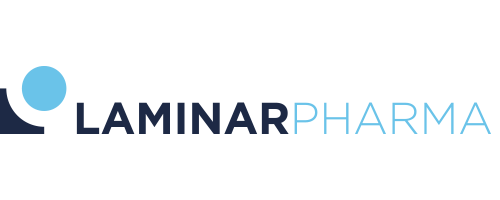
10 Aug Hope versus experience in glioblastoma
Development of new drugs for this hard-to-treat brain cancer is a slow and incremental process.
The failure, in late December, of Opdivo in glioblastoma is sadly emblematic of attempts to treat this this highly intractable disease. The phase III Checkpoint-548 trial missed one of its primary endpoints, progression-free survival, in mid-2019. Bristol now accepts that it will not meet the other, overall survival.
Checkmate-548 was the most recent hope for Opdivo in glioblastoma following the failures, in 2017 and 2019 respectively, of Checkmate-143 in the second-line setting and Checkmate-498 in first-line. Those studies had enrolled all comers, and Bristol restricted Checkpoint-548’s enrolment to patients carrying the MGMT methylation biomarker in the hope that they would be more likely to respond.
The future of Opdivo in this cancer is now unclear. But some other projects have shown glimmers of promise in glioblastoma in recent months – albeit at an earlier stage. On the strength of an interim cut of phase II data suggesting a five-month survival benefit over standard of care, Kazia Therapeutics’ paxalisib is entering pivotal studies in glioblastoma. The mTOR/PI3K inhibitor will join half a dozen other projects in late clinical development.
And data could arrive in the first half of next year on 2OHOA, a sphingomyelin synthase 1 activator under development by Laminar Pharma. If interim results are positive, Laminar plans to seek approval in Europe for the treatment of newly diagnosed glioblastoma multiforme, meaning that 2OHOA could, theoretically, leapfrog several compounds currently in phase III.
Sadly this is not a likely outcome if the history of drug development in this corner of oncology is any guide. The mainstay of therapy remains Temodar, first approved for glioblastoma more than 20 years ago, and the landscape is littered with failures.
Still, biopharma is nothing without hope. The mechanism of 2OHOA, also called LAM561, involves altering sphingolipid concentrations at the plasma membrane of cancer cells to limit recruitment of proliferation signalling proteins such as Kras.
The phase II/III Clinglio trial uses progression-free and overall survival as its co-primary endpoints, to be assessed after at least 124 PFS events and 124 deaths. The 180 patients in the study will receive either oral 2OHOA or placebo, given on top of chemoradiation and Temodar.
If the phase II part of this trial shows a benefit for the drug, Laminar plans to apply for conditional European approval of 2OHOA for newly diagnosed glioblastoma. If no such efficacy signal appears the company’s plans are less clear; perhaps it would go ahead with the phase III portion – or perhaps 2OHOA would become the latest molecule to be abandoned in this indication.
Real or a mirage?
It seems that at least a year more will have to pass before phase III data on a glioblastoma candidate emerge. The Mirage study of Bristol Myers Squibb’s proteasome inhibitor marizomib could yield overall survival data towards the end of 2022. Bristol obtained marizomib in 2019 via its acquisition of Celgene, which had itself acquired the asset from Triphase Accelerator three years earlier.
Bayer’s Stivarga appears to be next up in the phase III cohort. The GBM Agile study, which is being conducted by the Global Coalition for Adaptive Research and will assess several candidates from various developers, pits the TKI against Temodar in newly diagnosed disease, and against lomustine in recurrent glioblastoma. Stivarga is already marketed for liver, colorectal and stomach cancers, and has no sellside forecasts for sales in brain cancer, reflecting the enormous difficulty glioblastoma projects face.
Notorious for its lack of progress is Northwest Biotherapeutics’ DCVax-L. In October the company said it had locked the database for its long-running – 14 years, according to clinicaltrials.gov – phase III trial of this cancer vaccine. A release of data could be imminent, but there has been no movement here for at least eight years, and many industry watchers have long since run out of patience.
Let it SNO
Interim phase II results with Kazia’s paxalisib, presented at the Society for Neuro-Oncology (SNO) meeting in November, looked good. Median overall survival came in at 17.5 months, the company said, versus 12.7 months for temozolomide. But the Temodar figure did not come from the same trial, but rather from historical data. And an analysis of five Temodar glioblastoma trials by Edison researchers found an OS figure of 13.8 months.
The safety profile of the mTOR/PI3K inhibitor was the real victory, however. Use of PI3K inhibitors as a class has been severely limited by toxicity, and three of the four PI3K inhibitors approved have documented fatal side effects, with opportunistic infections being the most common. Paxalisib appears more benign, with hyperglycaemia and rash being the most common grade 3-4 adverse events in phase II.
Paxalisib will now join Stivarga in the GBM Agile study, data from which could be registrational.
VBI Vaccines’ VBI-1901 is one of the vanishingly few projects to have sellside forecasts specifically for sales in glioblastoma: $44m in 2026, according to EvaluatePharma’s consensus data. Data released at SNO from its ongoing phase I/IIa study showed two partial responses in the VBI-1901 plus adjuvant GM-CSF group of 10 subjects. VBI is looking into starting a registrational study in 2021.
Ziopharm’s Ad-RTS-hIL-12 is the only other phase II candidate to have sales forecasts for glioblastoma, with sellside consensus of $142m in 2026. Interim data at SNO showed that the gene therapy, along with its activator veledimex and on top of Libtayo, yielded one partial response at week 16. Median overall survival had not been reached at mean follow-up of 6.5 months.
Serum cytokine levels, including IL-12 and downstream IFN-g, were detected, as was a significant increase in circulating killer T-cells by day 28. The gene therapy is also in a phase II paediatric trial in a form of glioma.
Various settings
Interim cuts from two phase II trials of Kintara Therapeutics’ VAL-083 were also presented at SNO, and this therapy too will soon enter GBM Agile. In 27 evaluable newly-diagnosed patients receiving VAL-083 as adjuvant therapy following treatment with radiation and Temodar, median PFS was 10 months.
In the same trial, among 77 evaluable patients with recurrent disease who had completed at least once cycle of VAL-083 as second-line therapy, median OS was 7.6 months. Among the 43 evaluable patients who initially received the planned phase III dose of 30mg/m2/day, median OS was 8.5 months. According to Kintara, trials of lomustine, the most commonly used chemo for these patients, have shown median OS of 7.2 months.
Kintara also reported data from a China-based phase II trial in newly diagnosed patients with unmethylated promoter of the methylguanine-DNA methyltransferase gene. In 29 patients, median PFS was 9.3 months. In the 25 initially receiving phase III dose, median PFS was 8.7 months.
With at least three therapies under investigation, the GBM Agile trial will be a major watershed in the development of glioblastoma therapies when it reports in a couple of years. Until then, Laminar’s Clinglio study is the one to watch – unless, of course, Northwest Bio defies the doomsayers with knockout data for DCVax-L.
Source of Information : evaluate.com

